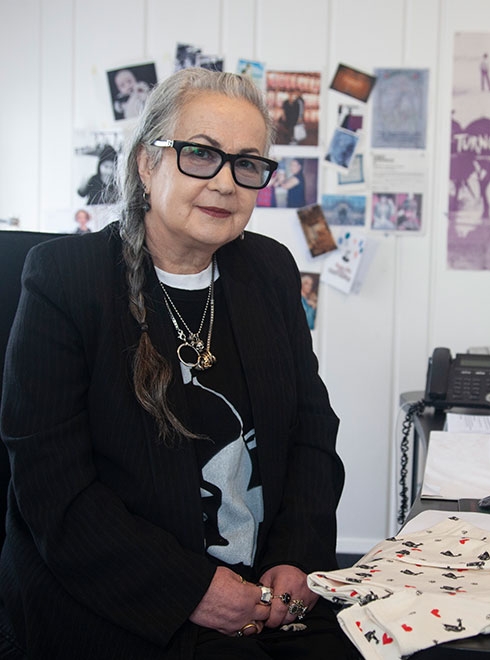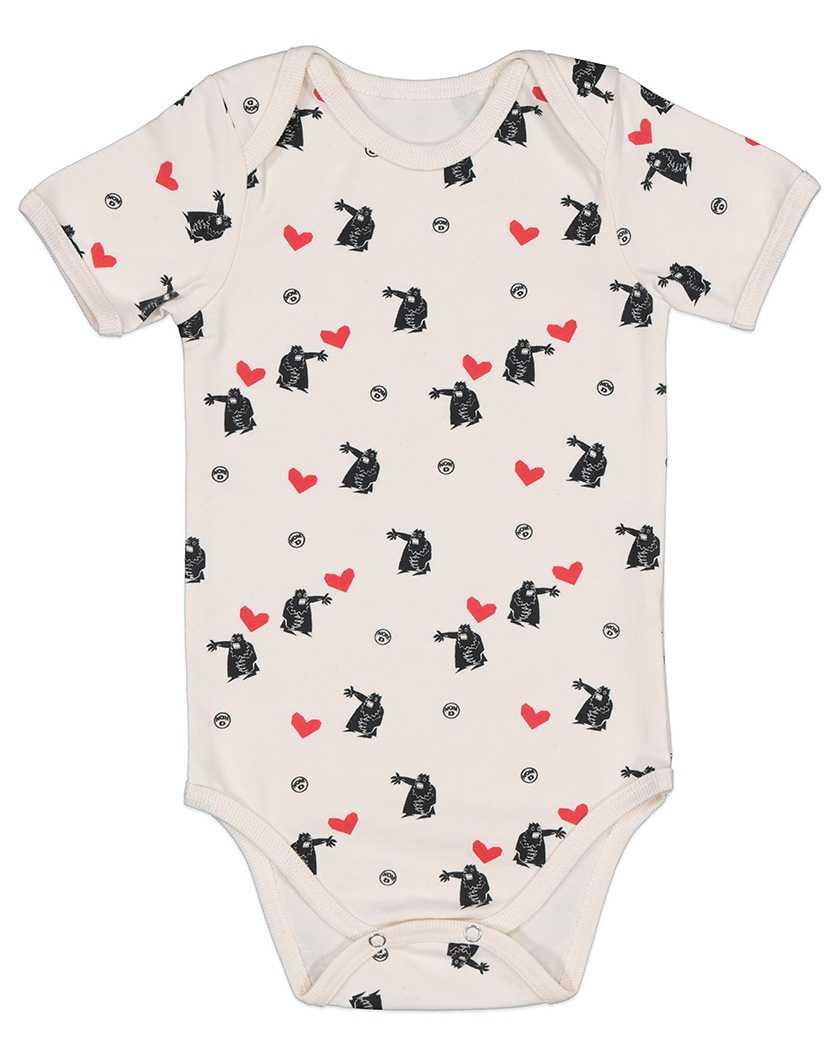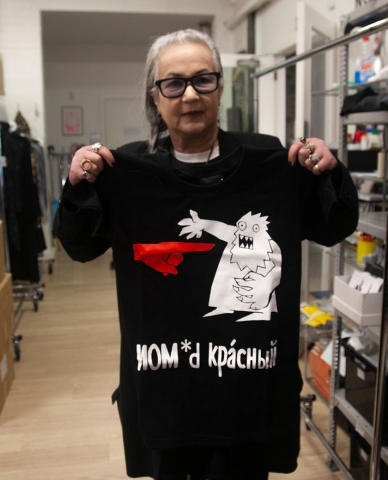
Nom*D

Lil’ Monsta
Meet the Designer Part 1:
Margarita Robertson from Nom*D
Meet the Designer Part 2: Margarita Robertson from Nom*D on being Great Full
On the beginning…
In 1975 we got started by my desire to have a fashion store that was boutique based. As you can imagine, in the seventies, it was something quite new for the city. My husband sold our MG car and with that money, we were able to open a small retail store on MorayPlace in Dunedin. We started to produce knitwear in 1986. You could buy yarn from MosgielKnitting Mills – which was just over the hill – and it seemed like the stars were aligning for us. Needless to say, a lot has changed on the manufacturing side, but our base is still here!
On Dunedin being home…
My parents emigrated to New Zealand from Greece in 1951, settling in Central Otago’s Chatto Creek where I was born. We moved to Dunedin in ‘55. So, I guess I’m a Dunedin girl - I have never lived anywhere else. Now that I’m 66 years’ old, it’s like, actually yeah - home is where the heart is. I regularly travel to other fashion capitals of the world, but there is something amazing about coming home.
On design considerations…
There are elements of traditional clothing, I quite like a uniform however I like that uniform to be changed or reworked. A jacket isn't necessarily a jacket: it could be longer or shorter or wider. In our archives you’ll find men’s garments from the '40s. I like waistcoats, I like pleated skirts. We twist them or present them in a slightly different way that is hopefully what makes NOM*dunique.
On challenges of manufacturing garments in New Zealand…
A lot of factories have actually closed down (CMT factories: Cut, Make, Trim). While it might be attractive to manufacture offshore because it is more cost-effective, it presents its own challenges, such as quality [assurance]. The other challenge is having someone who understands NOM*d as a brand. If they don’t, they might ask why a particular jacket had to have three different fabrics in it.
On being Made in New Zealand…
There was one season when we had a small portion of our knitwear made offshore. The knitwear factory we used in Ashburton was closing so we tried another factory offshore which I was a little hesitant about. We gave them some styles to do, the garments were delivered but we had a few hiccups with the construction. For me it was like “Ok, never again”. That was back in the early 2000s, and I’ve never entertained the thought of going offshore [to manufacture] again.
On finding success …
I feel we’ve remained relatively successful. I’ve grown up in a city that’s very down-to-earth, I've got no expectations of taking over the world, or anything like that with our brand. We have quite a healthy business, we’re self-funded, we haven’t had to have investors, but we are quite modest as well. It’s hard to nail why we are successful, I think we’re quite fortunate to have had our grounding in Dunedin.
On advice for those starting out…
You’ve got to stay true to your ideals. I think the most important thing for any new fashion designer is to establish what type of brand they want to be, how they would like to achieve that and stay committed to it without being too influenced by what’s going on around them. Any designer possibly going for funding or an investor would have to present a [five to ten year] business plan. A new designer has to think about who they want to be, where they want to be in the world.
On what my day looks like…
It starts with coffee. I head to the workroom, have a chat to the guys in the design room for a start, "Is there anything I need to know about? Is there anything we need to discuss?". I’m pretty hands on in every facet of the business. I dont think I’m a control freak – maybe I am a little bit – but I like to know everything that's going on - good and bad. By the same token, everyone within our workroom has their own tasks to fulfill and often their knowledge of being able to fulfill those tasks is more than mine, so I have huge respect for what they do.
On inspiration…
It can come from all sorts of things around us. I love going to the movies, I love music, art. I think you can’t find it, I think it comes to you. Inspiration finds you.
On art…
I’ll never forget a Louise Bourgeois exhibition at the Pompidou Centre in Paris: That whole concept of her art in so many different mediums; the creativity like the red cells, the knitted objects and just all sorts of things twisted and turned. I remember being so absolutely fascinated.
On family…
We have two sons, who are now adults and are [both] quite creative. My son Sam stencils our t-shirts. Geordie is the adventurist, and loves travel. We also have a grand-daughter who is 16.
On finding flow at work…
I do live and breathe fashion. I'm not doing a Monday to Friday role down here in the workroom. And if we go away for a holiday I find switching off difficult.
On being grateful…
I think one of the most meaningful moments for me, as far as gratitude goes, was when my brother in Timaru was diagnosed with cancer and he received incredible support from the community and hospice. The extraordinary service was something that I never, ever was aware existed [until then], and I was overwhelmed at how amazing the people were that worked there – all voluntary.
On contributing to Great Full…
I think if we can contribute to something as important as Starship, we should. It may be based in Auckland, but I know a lot of children are flown there from all parts of New Zealand, and I think it’s extraordinary that we have this facility.
On our team at NOM*d...
Our team over the years has done some amazing work and I'm so grateful because I know that our business wouldn't survive without them. I'm really grateful for the fact they have come to share the same vision as I do and have participated in the success of the brand.
On NOM*d's print for Great Full…

One of our most popular and pretty much most iconic prints for our t-shirts was from a collection that we did called ‘Red’ in 2002. Influenced by some Russian posters from the early 1900s, my son appropriated some prints and off them there’s a little skeleton and a monster with a red hand pointing to each of these objects.
It’s the whole idea of taking something that you saw out there was existing, and taking it apart and turning it into something that is NOM*d. We are still making those [skeleton and monster] prints today, and we call all the t-shirts iconic: they never die.
Lauren, who creates fabric prints for NOM*d, manipulated the little monster, down to being quite child-like. Instead of the red hand, we have the red heart. It actually looks amazing. I’m so happy with it.


